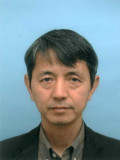Lectures
Plenary Lectures
Prof. John K. Eaton Stanford University, USA |
||
| Title: | Turbulent thermal transport: MRI experiments, large-eddy simulation, and machine-learning models |  |
| Abstract: | Turbulent scalar mixing is the controlling process in many thermal systems including boundary-layer heat transfer, buoyant plumes, and discrete-hole film cooling. In simple flows, turbulent transport is calculated accurately by direct numerical simulations, but lower fidelity models used for practical computations are not predictive. Magnetic Resonance Imaging (MRI) techniques to measure velocity and scalar concentration fields provide new insight into thermal transport in complex flows, particularly for film cooling flows where we have focused our attention. For example, full-field measurements of isolated film-cooling jets reveal important regions with negative scalar diffusivity. Wall resolved large eddy simulations (LES) accurately reproduce the MRI measurements and are used to explore these unexplained phenomena. We are developing new scalar transport models for Reynolds-Averaged Navier-Stokes computations using physics-informed, machine learning (ML) techniques. The goal is accurate representation of the turbulent diffusivity leading to improved temperature field predictions. ML models trained using high fidelity simulations provide significantly better scalar transport predictions than conventional turbulence models. Interpretation of the ML models leads to new understanding of the flow features that cause failure of conventional models. | |
| Prof. Andrei G. Fedorov Georgia Tech, USA | ||
| Title: | Thermal dissipation at extremes using confined evaporating liquid films with streaming gas/vapor flows |  |
| Abstract: | I will present recent advances in fundamental understanding of ultra-thin liquid film evaporation subjected to high velocity streaming gas/vapor flow, which allows for simultaneous reduction of convective/conductive heat transfer resistance across the liquid film and rapid removal of vapor from an evaporating liquid interface. This unique environment for observing evaporative heat and mass transfer dynamics is enabled by use of two complimentary thermal management schemes and testbeds: (1) ultra-small (<10 um) microgaps, with and without pin fins, for convective boiling in confined quasi-2D domains, and (2) nanoelectrospray impingement for controlled topology (<1 um) liquid film formation coupled to an entrained gas jet. The test sections are batch micromachined in silicon and instrumented with thin-film resistive thermometry to enable quantitative assessment of the capability for dissipating extreme heat fluxes up to multiple kW/cm2. These experimental systems and test parameters constitute extreme values in terms of geometry, film thickness, mass fluxes, and heat fluxes. New flow regimes for convective flow boiling and thin film evaporation will be identified and discussed, as a function of increasing heat flux and film confinement. Dominant mechanism(s) of two-phase heat transfer responsible for each regime are postulated based first principle heat/mass transfer modeling and flow visualization correlated with pressure drop, mass flux and thermal resistance measurements. | |
| Prof. Min Soo Kim Seoul National University, Korea | ||
| Title: | Hydrogen economy and fuel cell technology |  |
| Abstract: | Hydrogen economy can be one of possible solutions to the global warming and air pollution problems. The air pollution due to the use of fossil fuel will be even more serious in the future. By this reason, hydrogen is considered as an eco-friendly energy source and related fuel cell technology gains a great attention. As a kind of fuel cells, polymer electrolyte membrane fuel cell (PEMFC) attracts the limelight as a future power generation system in automotive, household and industrial applications. However, some problems still exist to be solved to meet the needs of current industries, that is, to enhance the performance of the fuel cell. In our research, high performance of fuel cell is achieved when locally non-uniform porous flow field design is applied, which enables us to realize more compact and efficient fuel cell systems. Next, with the elevation of fuel cell performance, heat dissipation rate also increases especially when the power generation rate is great. Therefore, application of flow boiling into fuel cell thermal management system is tried, and we achieved uniform temperature distribution over the fuel cell stack at a reasonable temperature level. Fault detection and diagnosis logic for the fuel cell system to improve its durability and reliability is very important for a commercialization of fuel cell systems. System parameter variations for possible faults are carefully reviewed for early detection of faults and neural network approach was applied for diagnosing the faults. | |
| Prof. Sung Jin Kim KAIST, Korea | ||
| Title: | Journey toward flexible thermal superconductor |  |
| Abstract: | This talk is intended to provide a perspective and review of a journey toward a flexible thermal superconductor, which can be bent or twisted, to control heat transfer in heat generating devices of various shapes. The thermal superconductor exploits recent advances in micro pulsating heat pipes, which consists of a liquid-vapor slug-train unit oscillating within a microchannel. Its thermal conductivity is 1000 W/mK, 5 times higher than aluminum, and 5000 times higher than current flexible materials, and its thickness is less than 1 mm. Compared to conventional pulsating heat pipes, micro pulsating heat pipes with hydraulic diameters of less than 1 mm have interesting features including orientation independent performance. In addition, several new ideas for thermal performance enhancement in the micro pulsating heat pipes will be presented. This talk will conclude with an overview of ongoing research activities associated with a prestigious 9 year grant by Korea’s Creative Research Initiative to develop Flexible and Thin Thermal Superconductors. | |
| Prof. Taku Ohara Tohoku University, Japan | ||
| Title: | Thermal energy transfer in liquids, soft matters and over the interfaces: A molecular view |  |
| Abstract: | Why does this material have this value of thermophysical properties? How will be the value of thermophysical properties when this imaginary material is realized? Can we design new molecules to build a new material that has desired thermophysical properties? Molecular dynamics (MD) analysis has a potential to answer these questions. It may be the only way especially for liquids, soft matters and their interfaces where no useful theory is available unlike solids and gases. Here we present our systematic study on thermal energy transfer in liquids and soft matters. To analyze heat conduction, our unique approach of the heat flux decomposition has been applied where contribution of the typical atomic groups in the molecules to macroscopic heat flux is evaluated. Bulk liquids including liquids of long chain molecules that transfer thermal energy via deformation, associated liquids with long-range electrostatic intermolecular forces, and soft matters with some orientation of polymer molecules which exhibit anisotropic heat conduction have been analyzed. The concept of analysis for these bulk materials are now being extended to thermal energy transfer over solid-liquid/soft matter interfaces, which seeks reduction of thermal boundary resistance by using surface modification and thermal interface materials (TIMs) that are required for high-density heat generation devices such as modern power modules. | |
| Prof. Yuji Suzuki The University of Tokyo, Japan | ||
| Title: | Electret-based thermal and kinetic energy harvesting for wearable devices |  |
| Abstract: | Recently, thermal and kinetic energy harvesting devices attract much attention for their use in powering IoT/wearable devices, and various electret-based energy harvesters have been developed. Electret is analogue to magnet, by which a permanent electrostatic field is formed. However, since the first development of electret using Carnauba wax in 1925, electret materials have been developed by heuristic approach, and no guide principle for their improvement exists. In this talk, our recent study of high-performance amorphous fluorinated polymer electret based on quantum chemical analysis is discussed. Density functional theory is adopted to analyse the electron affinity of fluorinated polymers with different end groups. In analysis of CYTOP series with different end groups, it is found that the amide bond at the end of CYTOP chain attracts electrons, leading to high electron affinity of the molecule. Based on the DFT results, a new electret material has been developed. With a 15 um-thick film, a record-high surface charge density of -4 mC/m2 has been obtained. It is also found from the thermally stimulated discharge experiment that the electrons trapped in this new material are stable even above the glass transition temperature of the polymer. In the latter part of this talk, our recent prototypes of electret-based thermal and kinetic energy harvesters will be introduced. A novel low-profile rotational electret energy harvester (EH) is prototyped for capturing power from low-frequency vibration, such as human arm swing. CYTOP is employed to realize high surface potential over 800 V. Thanks to cost-effective flexible print circuit boards, the thickness of the rotational part is as thin as 2.8 mm, which is at least less than half of the previous rotational EHs. Output power up to 200 uW has been obtained at a low rotational speed of 1 rps. Attempts of electret-based thermal energy harvesters using unsteady temperature change will also be discussed. |
|
| Prof. Chi-Chuan Wang TNational Chiao Tung University, Taiwan | ||
| Title: | Recent progress of novel air-cooled heat sinks for electronic cooling |  |
| Abstract: | This study provides an overview regarding enhancement of an air-cooled heat sink applicable for electronic cooling. The augmentations upon air-cooled heat sinks are normally via incorporating more surfaces, surface modifications such as interrupted, dimple, groove, vortex generator, porous surface, or compound combinations, and manipulating effective temperature difference. Some novel designs to facilitate the aforementioned means are discussed in the present overview. Fin configuration plays essential role in the air-cooled heat sinks. Normally interrupted surfaces offer higher heat transfer performance than dimple/groove surface. Vortex generator or dimple/groove surfaces provide lower pressure drop penalty but also contains a comparatively low heat transfer performance. More surface may yield higher pressure drop with lower fin efficiency. The ineffectiveness of low fin efficiency is especially severe when porous structure is employed. To tailor the low efficiency problem, incorporating the non-uniform fin design or some supporting solid plate can appreciably remedy the weak point. Manipulating effective temperature difference is also quite useful in fine tuning the performance with least expenses. In some cases, the performance can be maintained or slightly improved with smaller surface area, thereby mass reduction and a lower cost can be achieved. | |
Keynote Lectures
Prof. Dereje Agonafer University of Texas Arlington, USA |
||
| Title: | Thermal and control design for dynamic air and liquid cooling in data centers |  |
| Abstract: | Management of the cooling infrastructure in a data center is driven mainly by the need for high reliability, often leading to overprovisioning of cooling resources. Although, cooling optimization in a data center can reduce costs and enhance cooling efficiency, optimization practice is complicated by the dynamic environment prevalent within a data center. The suitability of data-driven modelling tools such as Artificial Neural Network (ANN), for predictive monitoring and dynamic control is well documented. An ANN model enables real-time simulation that can mimic the datacenter’s operational characteristics to develop and adopt control methods for the systems that maintain the datacenters in desirable operating conditions. Finding system interactions occurring inside a data center and parametrically characterizing their interdependency and non-linearity is challenging and difficult to understand based on gained domain knowledge. This study seeks to establish a methodology to develop pro-active control strategies facilitated by data-driven modelling. Developing a robust data-driven ANN model that adequately represents the key physical interactions present in an operational requires generous amount of training data. Training data is generated using physics-based and Computational Fluid Dynamics (CFD) model simulations, for relevant steady state and transient analysis on datacenters. In this presentation, the utility of such data-driven models in control design and cooling optimization will be discussed. On the liquid cooling front, a novel cold plate design and a self-sensing, self-regulating flow control device prototype developed at UTA will be discussed. This research introduces controls and instrumentation to promote smarter solutions and dynamic liquid cooling systems with improved performance and a built-in extendibility for high power devices servers including systems for data center applications. |
|
Prof. Wilson K. S. Chiu University of Connecticut, USA |
||
| Title: | Three-dimensional heat and species transport in energy materials |  |
| Abstract: | Advances in materials increasingly rely on the three-dimensional (3-D) characteristics of its morphology, microstructure and chemistry. This presentation will review 3-D nanoscale imaging techniques that measure microstructural and chemical properties, and discuss its influence on material function and reliability. The presentation will then focus on 3-D microstructural imaging methods for metal foams, fuel cell, batteries and other energy materials. Two 3-D imaging modalities using x-ray absorption and fluorescence-based synchrotron-based transmission x-ray microscopy will be demonstrated by characterizing the 3-D structural and chemical distribution, and the use of 3-D images for transport simulations. Challenges and opportunities for future work will then be discussed. The goal of this research will be to obtain a scientific and engineering understanding into how microstructure-induced transport mechanisms govern performance, with a long-term goal to improve current materials and create new materials that will enable improved device performance and increased long-term reliability for advanced engineering applications. | |
| Prof. Jae Dong Chung Sejong University, Korea | ||
| Title: | Adsorption refrigeration: Numerical approaches for system analysis |  |
| Abstract: | The adsorption cooling refrigerator is an alternative cooling device which uses eco-friendly working pairs and can be driven by low-grade heat sources. However, the adsorption chiller still has not been widely adopted because of drawbacks such as low efficiency, large size, and high initial cost. Many studies have been conducted to resolve these disadvantages including system optimization, advanced cycles, materials, and new types of adsorption chiller. The research trends and some results performed by our research group will be demonstrated. Numerical approached for the system analysis will be focused. | |
| Prof. Asegun Henry Massachusetts Institute of Technology, USA | ||
| Title: | Rethinking problems in thermal science and engineering - From atoms to applications |  |
| Abstract: | Thermal energy transport, conversion and storage are central to many of the industries, technologies and devices we use every day, from our cell phones and laptops to our refrigerators and automobiles. However, there are still a number of thermal phenomena for which the underlying science is not well understood and on the engineering side, there are regimes of operation/performance that are theoretically possible, but inaccessible from a practical perspective. This talk will review how the Atomistic Simulation & Energy (ASE) research group at MIT has managed to realize important advancements on some of these problems, by rethinking problems from the beginning and challenging established paradigms. More specifically, this talk will highlight the recent development of a new formalism for understanding heat conduction through phonons (e.g., atomic vibrations in rigid bodies) in terms of correlation instead of scattering. This new approach solved several inconsistencies between theory and experimental data for disordered materials and interfaces, and also enabled discovery of some non-intuitive effects that were previously considered impossible. In addition, this talk will review recent progress towards enabling heat transfer at extreme temperatures by using liquid metal as a heat transfer fluid in all graphite/ceramic infrastructures. Most notably, the ASE group has demonstrated the highest temperature pump on record (1400°C), which has opened up a new regime of operation that was previously inaccessible. This technological breakthrough has led to the conception of new energy systems, such as thermal energy grid storage (i.e., aka “Sun in a Box”) and a new CO2 free approach to hydrogen production based on methane pyrolysis. Both of these new technologies are currently under development in the ASE group and this talk will review progress to date. In addition, this talk will also cover what are believed to be the Top 5 Most Impactful Problems in Thermal Science and Engineering. The objective of this portion of the talk is to stimulate a broader interest from various scientific/engineering communities to begin working on these critical technological problems, because if solved, each will have a significant impact on mitigating climate change. | |
| Prof Ji Hwan Jeong Pusan National University, Korea | ||
| Title: | Inducing drop-wise condensation of steam on metallic surfaces used for heat exchangers |  |
| Abstract: | Vapor condensation is an essential process in power generation, water desalination, chemical process plants, and air-conditioning and refrigeration systems. The condensation is classified into three modes depending on the condensate flow behavior: film condensation (FWC), dropwise condensation (DWC), and mixed condensation. If dropwise condensation occurs, condensate droplets coalesce and sweep the condensing surface and are removed from the surface to create a bare surface that is continuously exposed to vapor. This behavior of the condensate droplets enhance the condensation heat transfer coefficient compared with other condensation modes. In previous research, various methods have been studied to induce DWC, such as polymer compound coatings, chemical promotors, and textured surface. Most of the surface treatment methods that induce dropwise condensation have a problem that dropwise condensation is not maintained for a long time. Development of robust coatings that retain hydrophobicity over time are still challenging. | |
| Prof. Yong Tae Kang Korea University, Korea | ||
| Title: | Development of core refrigeration technologies with low GWP refrigerants |  |
| Abstract: | In this presentation, international regulations on refrigerants are reviewed and low global warming potential (GWP) refrigerants are compared from the viewpoints of core refrigeration technology development. First, the condensation heat transfer and pressure drop characteristics in the plate heat exchanger are experimentally studied with R-1233zd(E). Based on the experimental results, the experimental results for Nusselt number and friction factor are derived. Furthermore, Nusselt number and friction factor calculated from the experiments and those predicted from the correlations (predicted Nu and f) are compared. In the case of Nusselt number, the results of 97% are distributed within ±20% of error band. In the case of friction factor, the results of 95% are distributed within ±20% of error band. Second, diffusion absorption refrigeration (DAR) system with low GWP refrigerants are tested. types of the refrigerant-absorbent pair, concentration of the refrigerant, pressure, and temperature are considered as the key parameters to obtain the maximum coefficiency of performance (COP) and a low enough evaporation temperature. The optimum conditions for the key parameters were determined by experiments. It was found that R1234zd(E) gave the best COP with the evaporation temperature of -12.2oC. Finally, the solar assisted heat pump system with R-1233zd(E) are tested to evaluate the COP and heat capacity. The heat capacity obtained from the system using R-1233zd(E) shows a lower value than that using R-134a. However, COP of the system using R-1233zd(E) shows a higher value due to low power consumption rate compared to that using R-134a. |
|
| Prof. Hiroshi Kawanabe Kyoto University, Japan | ||
| Title: | Structure and combustion process of a diesel spray |  |
| Abstract: | Some results of experiments and large eddy simulation (LES) were displayed to clarify structure and process of a diesel-spray combustion. In the first part, the LES calculation result of instantaneous distribution of fuel concentration in a diesel spray was compared with experiment result obtained by a planar laser induced fluorescence (pLIF). Statistical comparison between one-shot image obtained by pLIF method and one-shot image calculated by LES. In the second part, flame structure in a diesel spray was discussed based on a flame index proposed by Yamashita et al. Based on these data, the heat release by combustion of premixture occurs around the boundary between unburnt mixture in the upstream region and burnt mixture in the downstream region, and diffusion flame is formed in the surrounding region of the burnt mixture. The different flame structures are formed according to the surrounding gas conditions. | |
| Prof. Tong Seop Kim Inha University, Korea | ||
| Title: | Achieving a very high efficiency using synergistic cycle combination technologies in power plant engineering |  |
| Abstract: | Improving power generation efficiency must be pursued steadily to conserve natural resources and reduce global warming. Many studies have been done to enhance the efficiency of conventional power plants recently and have led to considerable accomplishments. The highest efficiency currently available is over 60% (based on a lower heating value) using a gas turbine/steam turbine combined cycle (GTCC) with natural gas as fuel. Another important future power source is the fuel cell. In particular, solid oxide fuel cells (SOFCs) are the most promising type of fuel cell for electric power plant applications. The biggest advantage of SOFCs is their potential for combination with other schemes for high efficiency. In this speech, a brief summary of the historic journey to accomplish the present power plant performance and some expectations to achieve further improvements. Firstly, the status-of-the-art GTCC technology is presented and a future prospect is discussed. Then, fuel cell related technologies, especially, cycle combinations between SOFC and conventional power sources such as GT, is exemplified, and a possibility of achieving a very high efficiency over 70% is discussed. | |
| Dr. Jungho Lee KIMM, Korea | ||
| Title: | Role of microporous coating on boiling heat transfer enhancement in thermosyphon and thermal ground plane |  |
| Abstract: | The role of microporous coating on boiling heat transfer enhancement is investigated to increase thermal performance of two-phase closed thermosyphon (TPCT) and thermal ground plane. Most passive heat transfer devices like as thermosyphon and heat pipe have not been required boiling heat transfer but only evaporation heat transfer at the evaporator, because local dry-out can be occurred after the presence of boiling and so the heat transfer devices turn to be eventually failed. With microporous coating on metal surfaces, the more nucleation cavities are making possible to enhance boiling heat transfer and so earlier boiling incipience can be made with relatively small wall superheat. In the two-phase closed thermosyphon (TPCT), the boiling heat transfer coefficient of microporous coated surface on the evaporator is 5 times greater than that of plain surface. The overall thermal resistance of the microporous coated TPCT is reduced to a half at the specific filling ratio. In the thermal ground plane, the microporous coating can expand its thermal performance up to a high heat flux of 200 W/cm2. More engineering applications with microporous coating are introduced in thermal designing stage of passive heat transfer devices such as thermosyphon, heat pipe and thermal ground plane. | |
| Prof. Akio Miyara Saga University, Japan | ||
| Title: | Measurement of local heat transfer characteristics and flow behavior of two phase flow in a complex channel |  |
| Abstract: | In a heat exchanger with complex channels, heat transfer is enhanced by effects of expanding heat transfer arear, mixing the flow, and disturbing the boundary layer. In case of two phase flow in a complex channel with condensation or evaporation, the flow behavior becomes more complicated. Because of a complex structure of the heat exchanger, measurement of local heat transfer characteristics and flow behavior is not easy. In this study, a cannel of plate heat exchanger formed by two grooved plates was considered as a complex channel. Local heat transfer coefficients of condensation and evaporation were measured by using temperature distributions of heat transfer plates welded on the channel plates. The heat transfer coefficient has higher value near the center and lower value in the side areas. And there are some differences of the heat transfer coefficient of facing plates. In order to observe the two phase flow, a transparent channel with the complex channel was consisted of acrylic plates. Adiabatic two phase flow of FC-72 in the transparent channel was observed by high speed camera. Flow behavior was considered from the obtained video and local void fraction was estimated by analyzing the video image transferred to gray scale. | |
| Prof. Osamu Nakabeppu Meiji University, Japan | ||
| Title: | MEMS sensor for cooling loss study of IC engine |  |
| Abstract: | Mitigation of cooling loss from the internal combustion engines is important target for improving the thermal efficiency. Heat loss mechanism has been unclarified yet, so new thin film type RTD surface temperature sensor was introduced to a comprehensive engine research in the SIP, Strategic Innovation Promotion Program by the cabinet office of Japan. The instantaneous and local heat flux was measured with a good signal to noise ratio by measuring surface temperature at 100 kHz rate by the RTD sensor and analyzing the transient thermal conduction inside the wall. The measured trends show that heat flux of a few hundred kW/m2 level was observed in the compression phase near the TDC, a jump up to several MW/m2 at frame front arrival to the inner wall surface in the combustion phase, and decay with a few millisecond level time constant in the expansion phase. It was also proposed that flow information near the wall was extracted by the correlation analysis among three heat flux fluctuation trends measured by an adjacent three point RTD sensor. Flow velocity parallel to the wall and a scale of hot or cold fluid bodies were statistically derived from a continuous 200 cycle heat flux data taken in the engine. The MEMS sensor applied to the harsh environment showed the fine results on the detailed heat transfer. | |
| Prof. Joerg Petrasch Michigan State University, USA | ||
| Title: | Heat transfer challenges in thermochemical grid-level storage of electricity using metal/metal oxide redox systems |
 |
| Abstract: | Grid-level electricity storage solutions on the 10 to 100 hours timescale is a critical enabling technology for the future CO2 neutral power grid dominated by intermittent renewable generation via wind and solar energy. We are currently developing a thermochemical storage system relying on a packed bed of porous pelletized Magnesium-Manganese oxides. The system is charged with excess renewable electricity by resistively heating the bed to 1500oC at reduced pressure thus partially reducing the oxides. Energy is recovered by oxidation when passing pressurized air from the compressor of a turbo generator set through the porous reactive bed. The low effective thermal conductivity of the packed bed of Mg-Mn oxide is only partially alleviated by radiative transfer at elevated temperatures and requires distributed heating throughout the bed to avoid hotspots that would lead to local sintering and deactivation. Our technology makes use of the fact that Mg-Mn oxides become electrically conductive at temperatures above 950oC by using the bed itself as the resistive heating element. A model of coupled transient multi-scale conductive, radiative, and convective heat transfer with volumetric heating inside the cylindrical porous packed bed is developed and used to achieve configurations with close to uniform temperature distribution during heating. |
|
Prof. Ying Sun Drexel University, USA |
||
| Title: | Probing the temperature profile across a liquid-vapor interface during phase change |  |
| Abstract: | The temperature profile across a liquid-vapor interface in the presence of phase change is essential for evaporation, boiling and condensation but it is not well understood. It has been shown experimentally, from non-equilibrium thermodynamics, and using molecular dynamics simulations the existence of an inverted temperature profile across an evaporating liquid-vapor interface where the vapor side of the evaporating interface observes the lowest temperature, opposite to the direction of thermal transport. A possible explanation is that the sensible heat flux is small and opposite to the direction of mass flux. In this study, we apply non-equilibrium molecular dynamics simulations to systematically study the temperature profile across a liquid-vapor interface during evaporation and condensation under different heat fluxes. The calculated vapor temperature shows different profiles inside the Knudsen layers and in the bulk vapor. In addition, both the direction and magnitude of the interfacial temperature gradient, as well as the temperature jump at the liquid-vapor interface, depend on the applied heat flux. The interfacial entropy generation rate is calculated from the vibrational density of state of the molecules, and a positive production of interfacial entropy is obtained during evaporation. The results are also compared against the predictions from non-equilibrium thermodynamics. | |
| Prof. Hiroshi Suzuki Kobe University, Japan | ||
| Title: | Low carbon society realization by using hard-shell microcapsules with phase change materials |  |
| Abstract: | In Japan, total energy consumption for heating and cooling systems used in residential and commercial areas is larger than 2.0 EJ per year. On the other hand, there exists 2.5 EJ of unused thermal energy exhausted from power plants, industries, etc. When this unused thermal energy can be utilized for the heating and cooling systems in residential and commercial areas, we can drastically save carbon dioxide emission. However, there exist time and spatial gaps between the supply and demand of thermal energy utilization. On the solutions of these thermal gaps, thermal storage and latent heat transportation techniques can be applied. However, there exist the super-cooling occurrence problem on thermal storage systems and the particle growth control difficulty on latent heat transportation systems. In this lecture, we will introduce phase change materials encapsulated in silica hard shell microcapsules (HSMC). With this encapsulation technique, the particle growth and agglomeration can be limited. Additionally, we found the super-cooling phenomenon of solidification disappears on many phase change materials in HSMC. This unique effect of HSMC expands the application of thermal energy usage for unused thermal energy utilization, and then, it leads to a low carbon society realization. | |
| Prof. Kenji Yasuoka Keio University, Japan | ||
| Title: | Acceleration and analysis of molecular dynamics simulation with machine learning |  |
| Abstract: | Molecular dynamics (MD) simulation is a powerful computational method to calculate physical properties and analyze molecular mechanisms for various molecules. However, the high computational costs of large-scale and long-time MD simulations limit the applicability of the method. In addition, the analysis of molecular mechanisms is typically difficult due to the complexity of molecular behavior. To address these general problems of MD simulations, we proposed two novel machine learning methods focusing on (1) the acceleration of time evolution in MD simulations; and (2) the detection of representative molecular behavior that characterizes systems. To achieve the acceleration of time evolution in MD simulations, we proposed the machine learning method based on generative adversarial nets (GANs). From the actual short-term MD data, this method obtains the efficient time evolution method to generate the long-term dynamical statistics. To achieve the detection of representative molecular behavior in systems, we applied the deep neural networks to calculate statistical distances between different ensembles, that are probability distributions over the possible states of systems. Using statistical distances between all systems, the low-dimensional embeddings of them are provided. The structure of embeddings highlights the meaningful variables to explain the system differences. Furthermore, the molecular behavior that contributes to those differences can also be detected using the trained function of deep neural networks. Through experiments for several types of MD data, the applicability of our two schemes was demonstrated. | |
